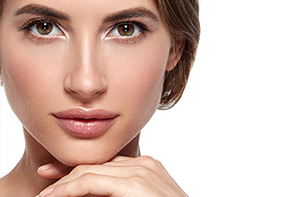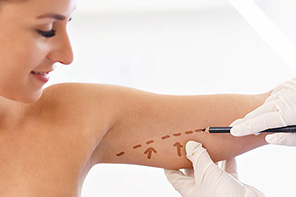
Hyperhidrosis Treatment By Botox
Botox is used medically to treat certain muscular conditions, and cosmetically to remove wrinkles by temporarily paralyzing muscles. It is made from a neurotoxin called botulinum toxin that is predominantly used as a treatment to reduce the appearance of facial wrinkles and fine lines. Beyond aesthetic applications, Botox is used to treat a variety of medical conditions, including eye squints, migraines, leaky bladders and excess sweating , which is Hyperhidrosis.
Hyperhidrosis is a medical term indicates that the amount of sweating is unnatural (antihypertensive do not work well for those who suffer of this condition) Botox injections are the best treatment option for people with hyperhidrosis that already tried antihistamines and it wasn’t enough to treat the excessive sweat.

How Botox Treat Hyperhidrosis?
Botox inhibits the nerves responsible for stimulating the sweat glands. Normally, the nervous system activates the sweat glands at high body temperature. This is how your body cools automatically, but for people who suffer from hyperhidrosis, the nerves activate the sweat glands very intensively, leading to excessive sweating.
When Botox is injected directly into the area that is sweating excessively in your body, your hyperactive nerves are broken. So your nerves will not be able to activate the sweat glands. However, Botox only prevents sweating in the specific area where it is injected.
We feel free to share some feedback from our honorable Patients

Garret D'silva,

Mary Fathima,

Helen Garcia,
Where Is Botox Injected?
Currently, Botox is only approved to treat armpit sweating. Botox injections are very effective in treating armpit sweating. Studies have found that Botox treats excessive sweating successfully up to 80-90%. However, the results don’t last exactly as in the treatment of armpit sweating. Studies also suggest that Botox works to treat the sweat of the forehead and it can reduce the sweat by 75% for five months.
Risks Of Botox Injection
Several studies have been conducted to assess the safety of Botox. Most people accept it well, however, some possible side effects includes:
- Pain or bruising at the injection site.
- Headache.
- Symptoms similar to flu symptoms.
- Eyelid slouch (when injecting face).
- Dry eye (when injecting face).
Serious side effects of Botox injections are extremely rare. Dangerous side effects only occur when Botox affects your entire body. This can happen hours, days or weeks after injection.
Those rare and serious side effects includes :
- Weak muscles in the whole body.
- Urinating a lot.
How Botox Is Injected?
Botox injections are simple and fast and it can be performed directly at your doctor’s clinic. Doctors usually ask to avoid armpit shave for two or three days before injection. If you are using aspirin, your doctor may ask you to stop it for a few days before the injection to prevent bruising. Tell your doctor about any medications you are using and don’t stop using any of them, unless your doctor tells you to do it. Botox injections work better when given by an experienced doctor. The injections don’t take too long and can be completed during a visit to the doctor’s clinic.
Your doctor will inject Botox directly below the skin surface using a fine needle. You will receive many injections, which will be in the form of a circle around the area to be treated.
Your doctor may give you something to prevent pain, such as ice cubes or painkillers and you can go back to work and normal life after. Your doctor may ask you to schedule a follow-up to verify that the entire area has been treated and that there are no problems.

Expectations After Botox Injection
You can return to your normal activities immediately after receiving Botox injections. It will take between two to seven days to stop sweating in the treated area. It can take two weeks for total dryness.
Botox effects are temporary, which means you will need more injections in the future. For armpit area, the drought may last from four to fourteen months. The results may not last long on the hands and feet, and may need to repeat injections within approximately six months.
After about two weeks of treatment, once you have seen the full effects of Botox, you should consult your doctor for a follow-up appointment. At this time, your doctor already can do more botox injections for untreated areas.








